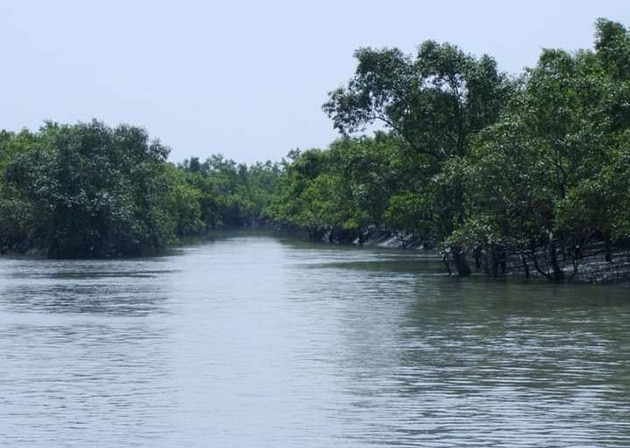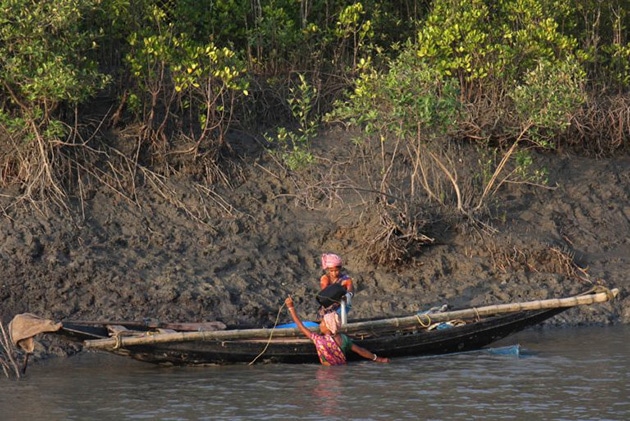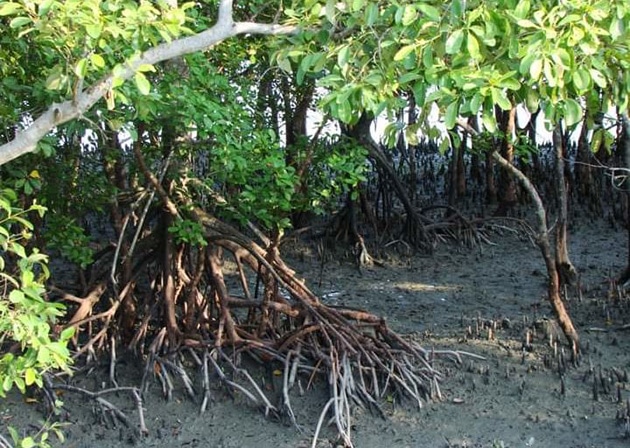With depleting fish catch, Sundarbans fishers migrate to other coastal states

- About 500 traditional fishermen from the Sankizahan village in the Sundarbans region migrate to other coastal states in India for the better part of the year.
- This migration, that seems to have happened over the past five or six years, is fuelled by the depleting fish catch that is affecting the livelihood of the traditional fishing communities.
- Human intervention, including harmful fishing practices and pollution along with climate change are among the reasons attributed for the depleting fish stock.
Sankizahan in Kultali area of the Sundarbans, the world’s largest mangrove ecosystem made of islands, rivers and creeks, used to be a village of fishermen who hunted on traditional and motorised boats in the local rivers and creeks and on trawlers in the Bay of Bengal. It is now a village of migratory fishermen who fish in India’s coastal states of Kerala and Karnataka, that house part of the western coastline and Tamil Nadu to the south, for the better part of a year.
Sankizahan resident Rakhal Das, a 38-year-old fisherman, recalled that the situation used to be different a decade ago. In 2015, when one of his two brothers informed him of his plan to migrate to Kerala to work in trawlers engaged in marine fishing and insisted that he too should do the same, Das had resisted.
He didn’t want to leave home. His bother Nikunja was convinced that the gradually declining fish catch around Sundarbans had left them with no other alternative. Nikunja left for Kerala. Banamali, his other brother, followed Nikunja the next year. And from 2017, Rakhal Das, too, has been working in Kerala from the beginning of the winter to the onset of the monsoon. The three brothers have to earn for a family of 15, including their elderly parents.
“My father never faced shortage of fish during winter. I have been fishing for nearly 20 years. The situation was not like this even 10 years ago. But now fishing in the winter hardly helps. The haul starts reducing from November,” Das said.
About 500 fishermen from Sankizahan now migrate west and southwards to work in other coastal states. Most of them work there from November-December to June, while some work there throughout the year. And Sankizahan is only one of the many villages in Kultali, Kakdwip, Gosaba, Basanti and Namkhana administrative blocks in the Sundarbans region that underwent this transformation over the past five-six years, as depleting fish catch in the rivers and creeks affected their livelihood.
“We knew that some fishermen from the Sundarbans were migrating to other coastal states but had no idea about the extent of their migration until they started contacting us from the end of May, in their hundreds, for help returning home. Now, we estimate that about 10,000 fishermen from this area work in those coastal states,” said Milan Das, general secretary of Dakshinbanga Matsajibi Forum.

Kultali’s Communist Party of India (Marxist) legislator Ramsankhar Haldar echoed him.
In the west coast (west of Sundarbans), fishworkers can earn up to Rs. 15,000 per month. Working in the Sundarbans, it would be less than half. Some people have sold off the traditional boats they owned and have become full-time worker in trawlers on the Arabian Sea, he said.
For years, fishing and aquaculture have been the backbone of the economy of the ecologically fragile Sundarbans region. The migration of the fisher people started about five-six years ago.
“Over the past two years, many fishermen simply abandoned their boats and left for the west coast to work in trawlers,” said Joykrishna Haldar, a former member of the West Bengal legislative Assembly and president of South Sundarban Fishermen and Fishworkers’ Union.
Local fishworkers’ associations estimate there to be nearly 4,000 small to large trawlers and about 50,000 traditional and motorised boats that are engaged in fishing in the sea, the rivers and the creeks. However, Sourabh Kumar Dubey, a researcher who has been following the changes in the Sundarbans region for several years, pointed out that the fish catch has reduced mainly in the rivers, creeks and estuaries, while the marine catch in Bay of Bengal has not been affected.
“Trawler owners are not migrating or abandoning business. Number of trawlers have sharply increased. It’s the traditional fisherfolks who fished in the rivers and creeks who have been hurt and are migrating,” said Dubey.
Members from the fishing community, scientists and researchers referred to multiple factors, including impacts of climate change and human interventions, which led to this migration. One of the impacts of climate change has been rising sea level, resulting in increased salinity in river water. The other is increased frequency and intensity of cyclones that keep hampering the usual flow of life.
“The catch reduces in the winter because the water level goes down in the rivers, resulting in increased salinity, which in turn affects the habitat of the fish species that prefer lesser saline water. Besides, pollution is also decreasing the reproduction capacity,” said Suman Bhusan Chakraborty, an associate professor in zoology at the Calcutta University who specialises on endocrinology.
For increasing water pollution, the dumping of industrial waste in the rivers and canals in the Sundarbans’ northern neighbourhood has been generally blamed.

Pradip Chatterjee, an environmentalist and convener of National Platform for Small-scale Fishworkers (Inland), referred to a study conducted in 2009, which interviewed fishers in nine places in nine different blocks adjacent to the Sundarban Tiger Reserve (STR). According to the study, 97% of the fishermen that responded to the survey complained of declining fish catch and 86% of them had blamed trawlers fishing close to the mouth of rivers, 71% blamed the use of micro-hole nets, 54% mentioned water pollution and 14% had mentioned increase in the population dependent on fishing.
Organisations of fisher people also cite the gradually decreasing area within Sundarbans Biosphere Reserve where fishing is still allowed. Collection of tiger prawn seeds by dragging fine-mesh nets along river banks has also be blamed for the destruction of many other species of fish. However, they blame trawlers most – for trawling along the mouths of rivers and also for the use of fine-mesh nets.
According to Tuhin Ghosh, a professor at the department of oceanographic studies, Jadavpur University, human interventions had more to do with this migration than climate change. “More people joined fishing over the years, increasing competition, while the use of fine-mesh net by trawlers resulted in the netting of juveniles and led to depletion of fish population,” he said.

Bankim Hazra, chairperson of Gangasagar-Bakkhali Development Authority, however, blamed climate change as the main reason behind migration. “Increasing cyclones have left the local people an anxious lot,” he said.
For some fishermen, like Sankizahan resident Paramesh Das who has been working in Kollam of Kerala, the prospect at home is so gloomy that they did not return despite the lockdown, hoping to resume work once trawlers started moving into the Arabian Sea.
This article first appeared on Mongabay.







